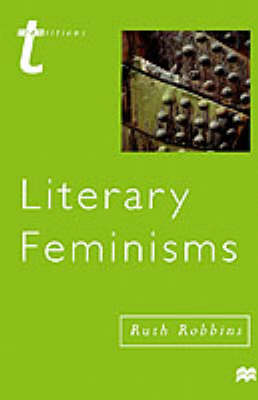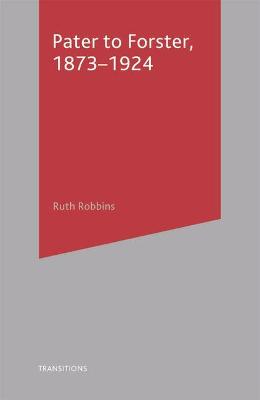Transitions
3 total works
LITERARY FEMINISMS provides a map for charting the difficult waters that feminist theories have created in literary studies. Ruth Robbins shows the reasons for the development of feminist literary critiques, explains the difficulties and explores some of feminism's blindspots. A wide range of theorists is discussed, from Wollstonecraft to Kristeva, showing the ways in which materialist, psychoanalytic and literary accounts of feminist thinking creatively intersect. Through a series of exemplary readings of texts such as Wilde's THE PICTURE OF DORAIN GRAY and Gilman's THE YELLOW WALL-PAPER she also points out how the student reader can begin to make her, or his, own feminist criticism, and can learn to engage with both the politics and poetics of the literature.
Who do you think you are? In Subjectivity, Ruth Robbins explores some of the responses to this fundamental question. In readings of a number of autobiographical texts from the last three centuries, Robbins offers an approachable account of formations of the self which demonstrates that both psychology and material conditions - often in tension with one another - are the building blocks of modern notions of selfhood. Key texts studied include:
- William Wordsworth's Prelude
- Thomas De Quincey's Confessions of an English Opium Eater
- James Joyce's A Portrait of the Artist as a Young Man
- Oscar Wilde's De Profundis
- Jung Chang's Wild Swans
Robbins also argues that our subjectivity, far from being the secure possession of the individual, is potentially fragile and contingent. She shows that the versions of subjectivity authorized by the dominant culture are full of gaps and blindspots that undo any notion of universal human nature: subjectivity is culturally and historically specific - we are, in part, what the culture in which we live permits us to be.
Concise and easy-to-follow, this introduction to the concept of subjectivity, and the theories surrounding it, shows that, in spite of the insecurity of selfhood, there is still much to be gained from the textual encounter with other selves. It is essential reading for all those studying 'autobiography' or 'autobiographical writing'.
- William Wordsworth's Prelude
- Thomas De Quincey's Confessions of an English Opium Eater
- James Joyce's A Portrait of the Artist as a Young Man
- Oscar Wilde's De Profundis
- Jung Chang's Wild Swans
Robbins also argues that our subjectivity, far from being the secure possession of the individual, is potentially fragile and contingent. She shows that the versions of subjectivity authorized by the dominant culture are full of gaps and blindspots that undo any notion of universal human nature: subjectivity is culturally and historically specific - we are, in part, what the culture in which we live permits us to be.
Concise and easy-to-follow, this introduction to the concept of subjectivity, and the theories surrounding it, shows that, in spite of the insecurity of selfhood, there is still much to be gained from the textual encounter with other selves. It is essential reading for all those studying 'autobiography' or 'autobiographical writing'.
Was the late nineteenth century 'Victorian' or 'modern'? Why did the New Woman disappear from literary history? Where did T. S. Eliot's poetics of the city come from?
In this essential guide, Ruth Robbins explores an era often named an 'age of transition' which exists uneasily between the apparent certainties of the Victorians and the advent of a Modernist aesthetics of instability. Robbins considers some of the central literary categories and themes of the period (decadence, realism, nostalgia, New Woman writing, degeneration, imperialism and early modernism) in writings by both major and 'minor' writers, thereby creating a complex picture of transitions, continuities and breaks with the past. By examining this tumultuous era as an age in its own right, Pater to Forster, 1873-1924 offers the reader a rather different history of the late Victorians and Modernists, and retells that history from a new perspective.
In this essential guide, Ruth Robbins explores an era often named an 'age of transition' which exists uneasily between the apparent certainties of the Victorians and the advent of a Modernist aesthetics of instability. Robbins considers some of the central literary categories and themes of the period (decadence, realism, nostalgia, New Woman writing, degeneration, imperialism and early modernism) in writings by both major and 'minor' writers, thereby creating a complex picture of transitions, continuities and breaks with the past. By examining this tumultuous era as an age in its own right, Pater to Forster, 1873-1924 offers the reader a rather different history of the late Victorians and Modernists, and retells that history from a new perspective.


